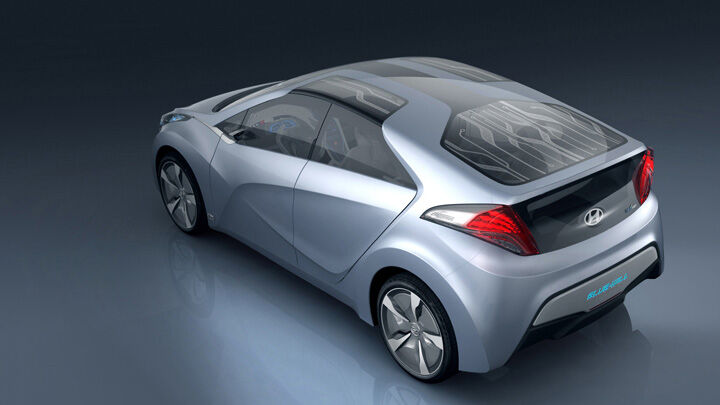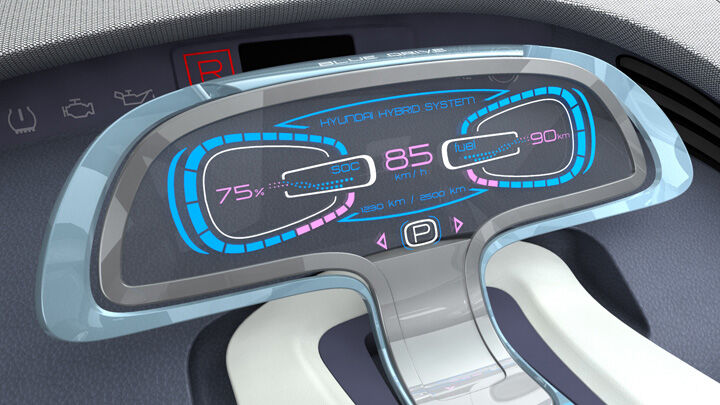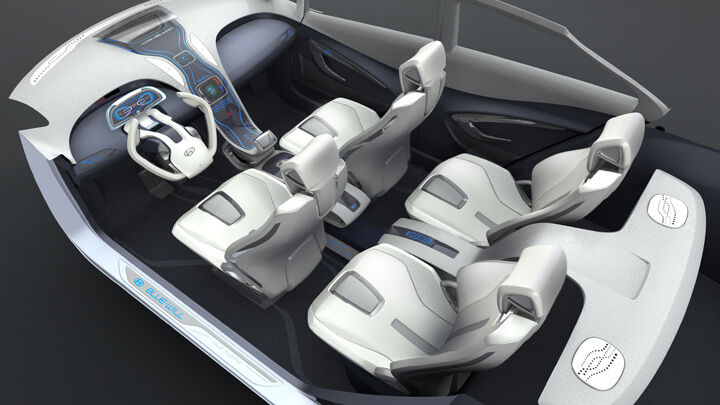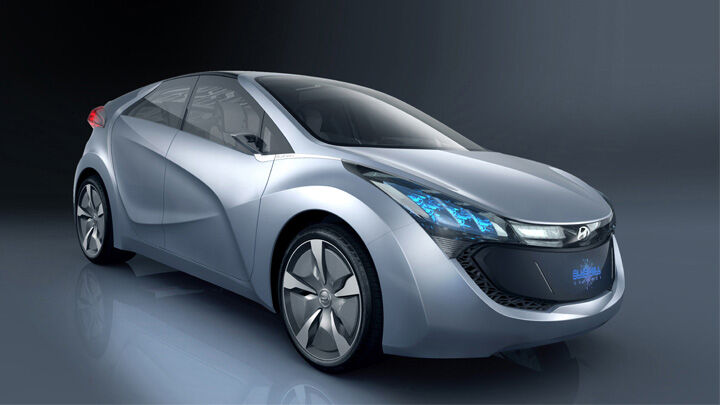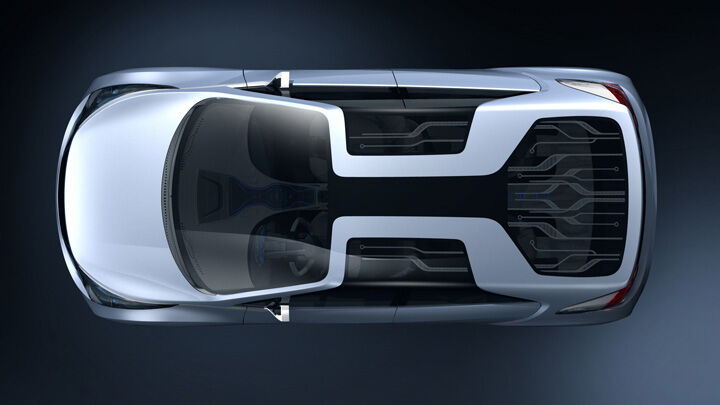"Eco-sleeker" was the core concept driving the design process. Its sweeping character lines and detailed form elevate this next generation hybrid to an entirely new level. Blue-Will's sleek surface treatment extends to the underbody where a full-length cover has been applied to minimize aerodynamic drag whilst maximizing fuel economy.
The LED panel on the front expresses a highly distinctive, futuristic image. The rear bike rack, neatly integrated into the trunk, adds an extra measure of convenience. To minimize weight, advanced materials such as carbon-fiber reinforced plastics and nano composites have been applied to the side sills, moldings and fenders.
Recycled PET material was used for the headlamp bezel, while use has also been made of PLA and PA11 bio-plastics on interior and exterior parts.
